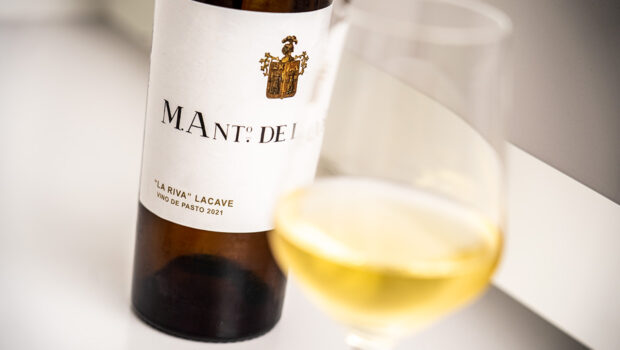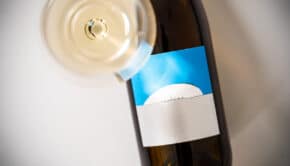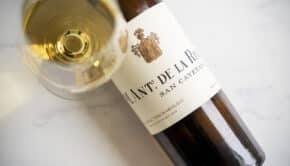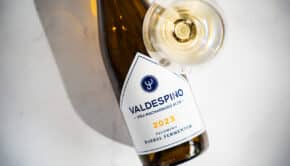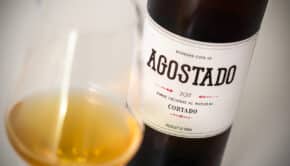La Riva Lacave 2021 – Vino de Pasto
In 2022 M. Ant. De La Riva (the project of Ramiro Ibãñez and Willy Pérez) presented a series of seven Vinos de Pasto. They are all made in the same way, the only difference being the vineyard that delivers the grapes. There are different plots like Las 10, El Armijo, El Cuadrado, Cambre, Matalían… as well as Lacave. Understanding the differences between different pagos is essential in their wines. Therefore each of these ancient vineyards are allowed to speak for themselves.
Vino de Pasto needs more background
Here’s a little rant if you don’t mind. Look up this wine (or any of the other 2021 Vinos de Pasto) on a random retailer website and you will usually find little or no information. Then one website indicates Macharnudo and another website points to Maína. Quite a stretch. There’s no official winery website with technical files to confirm. No back label information either. So in my case I bought virtually all of the wines from this series and they all look the same. I will invest some time to lay down the puzzle of each wine, but I’m afraid normal consumers won’t go that far.
To be honest, I think a € 30-35 bottle deserves decent background information, a story that explains why it’s different. If anything a Vino de Pasto terroir wine from Jerez needs this story more than other wines, as the category is still being developed. Making great wines is one thing, and they are so limited that they will probably sell out anyway, but I find the lack of educational effort a little disappointing. Make a name for your wines, tell their story! Add information to the back label or through a QR code. We can’t expect wines from Jerez to become famous by themselves. There, rant over.
Lacave and the Terán family
The most likely information is this. The grapes for this wine were sourced from a small parcel in the middle of the pago Maína, near Sanlúcar. It is called El Caserío de Lacave and belonged to the Terán family, who were involved in the Bodegas Rodríguez Lacave (of Barbiana and Quo Vadis). Currently they still own vineyards in Miraflores as well, if I’m not mistaken. The plot is 35 years old and it is managed with very traditional practices of mayetos. Maína is known for its extraordinary levels of diatoms in its albariza de barajuelas (60-70% limestone). It tends to result in wide and punchy wines.
Grapes are hand-harvested and pressed as a whole bunch. Then they are fermented in old botas at room temperature. The wine is aged for 12 months under a veil of flor.
“La Riva” Lacave – Vino de Pasto 2021 (13,5%, M. Ant. De La Riva 2022, 500 btl.)
Nose: my first impression was that this screams a little less ‘Jerez’ than previous Vinos de Pasto. It is fresh and fairly fruity, with a nice chalky undertone. Beautiful intensity too. A lot of red apples with just tiny hints of cider or gueuze. Then green leafy notes, more chalk and dried wildflowers, as well as herbal notes. Subtle hints of yeasty dough, as well as a hint of honeysuckle and dried apricot. High class.
Mouth: round and sapid. Plumpy white fruits – quinces, hints of melons – slowly evolving towards herbal notes and a slightly drier, mineral side. Good acidity. For Sanlúcar this is quite horizontal and weighty, rather than tight and fresh. Then savoury notes underpin the initial fruity layer and quickly take over. Herbs and leafy notes in the end. On the finish I’m getting stewed apples with a faint saline edge.
Availability: limited of course – only 500 bottles of each expression. Around € 30-35 per bottle.
Summary: A classic Maína wine, with a muscular character and a lot of sapidity. I'm not always a fan of this profile, but I found this Lacave to be very balanced and truly inviting. A high quality showcase of what Vino de Pasto is all about. I'm sure it will appeal to many wine lovers out there.


